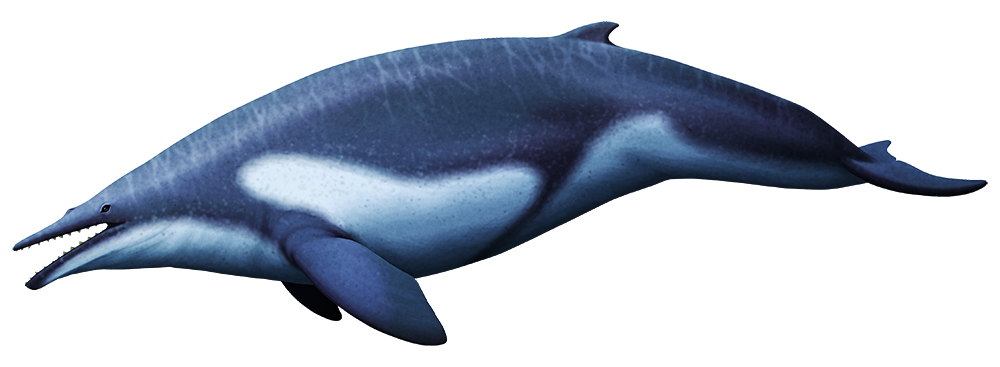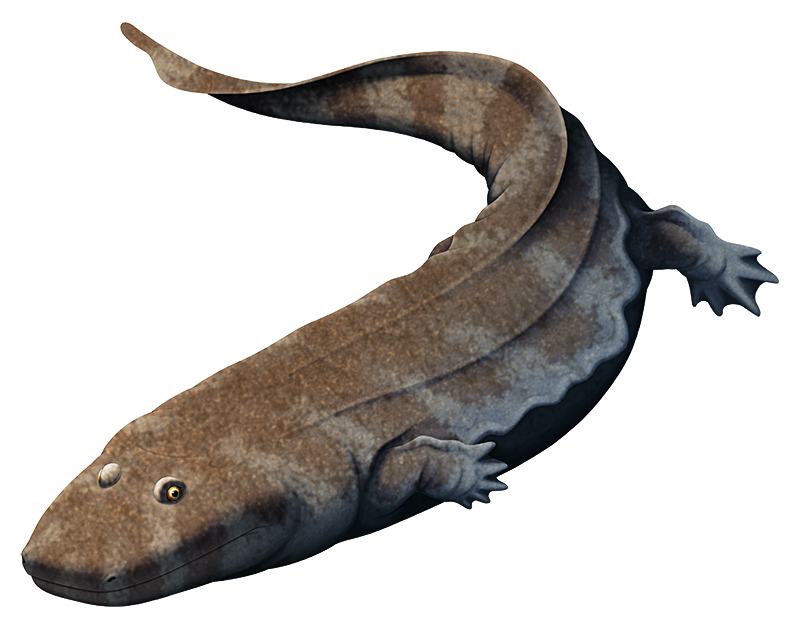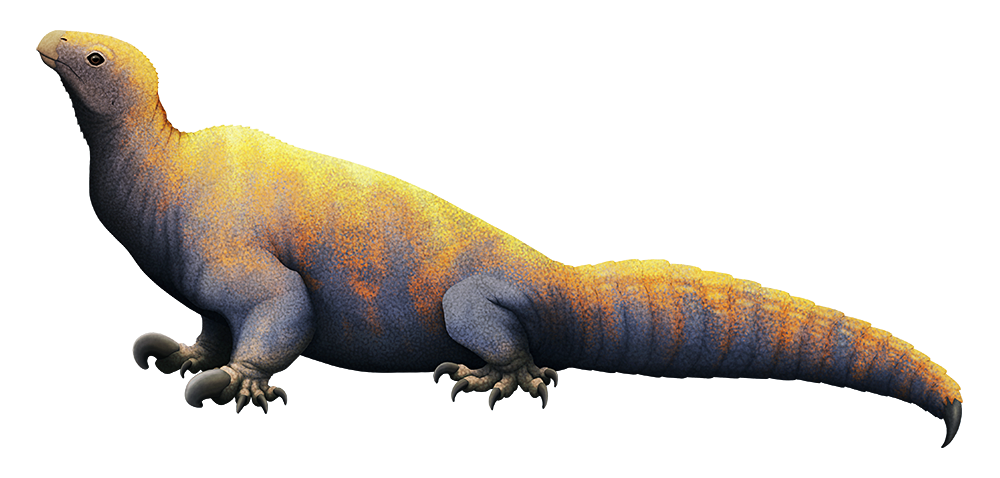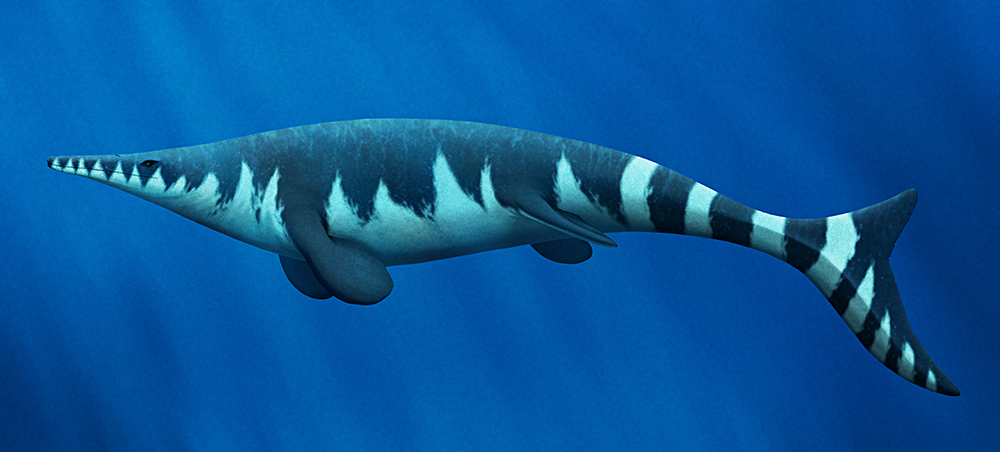Modern mysticete whales all have baleen plates in their mouths, but before the evolution of these specialized filter-feeding structures the early members of their lineage still had toothy jaws.
Borealodon osedax here was one of those “toothed mysticetes”, living about 30-28 million years ago during the mid-Oligocene off the coast of Washington state, USA.
Unlike modern baleen whales it was small, about the size of a modern porpoise at around 2m long (6’6″), and the wear on its multi-cusped teeth suggest it was a predator taking slicing bites of fish – possibly using suction-assisted feeding like its close relatives the aetiocetids.
Its fossilized remains are also a rare example of an ancient whale fall, with characteristic bore holes in its bones from Osedax worms.




